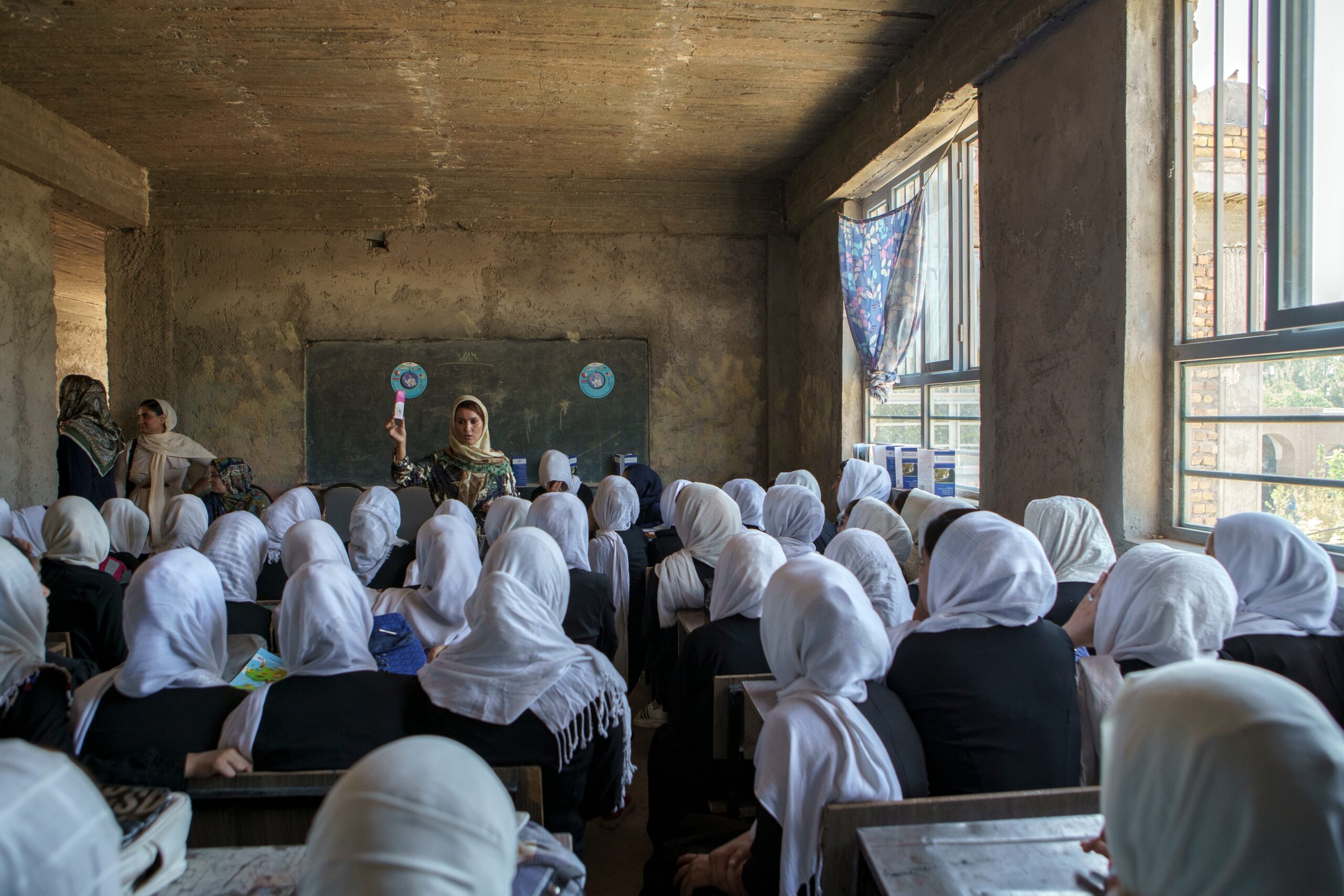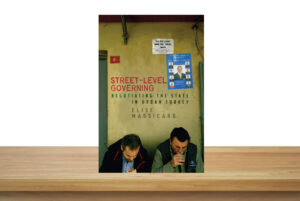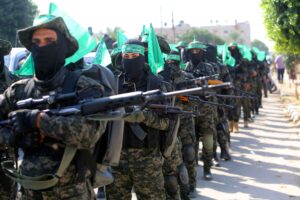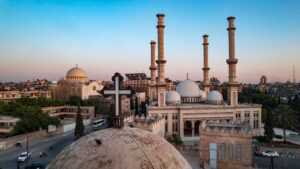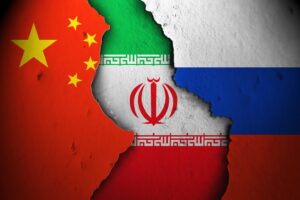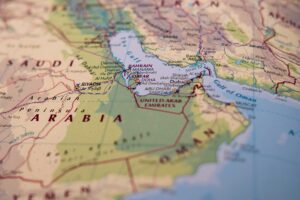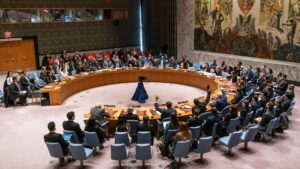Abridged speech by Dr. Nina Ansary for the Cambridge Middle East and North Africa Forum Women’s Leadership Initiative (WLI) speaker series commemorating International Women’s Day and Women’s History Month – St Catharine’s College, University of Cambridge – 21st March 2024.
It was August 15, 2021. Businesswoman Sediqa Mushtaq was engrossed in her work as Director of the Farabi Health Institute, one of the largest private health institutions in Afghanistan. Sediqa took great pride in being named one of the ten most accomplished women in Afghanistan. She took even more pride in the difference she had made in the lives of so many young women. During the course of her career, Sediqa trained hundreds of female health professionals, arming them for successful careers in medicine.
However, that day everything changed.
The Taliban entered Afghanistan’s capital city and seized control of the country.
As Sediqa described it:
“When I heard the news that the Taliban had entered Kabul, I felt as if I fell and broke into pieces. I fell from a bright place into darkness, with no light to be seen.”
Today, more than two and a half years later, what has become of women and girls in Afghanistan amid the ongoing reign of terror? What does the future hold for them as well their country given that the Taliban has quashed the potential of half of the country’s population, erasing them from public life?
What are the various ways women and girls in Afghanistan are courageously resisting the Taliban’s draconian laws, amid the ongoing crisis of impunity?
Women and girls are writing a new chapter in Afghanistan’s history by demonstrating enormous levels of fortitude and resilience.
The darkness Sediqa referred to has not lifted. Instead, life has transformed into a waking nightmare with the Taliban systemically dismantling the monumental gains made by women over the past two decades. At the forefront of this shocking and tragic reality is that Afghan women rightfully feel abandoned as the world remains silent. But what is quite remarkable, is that despite the dire and catastrophic circumstances, women and girls are writing a new chapter in Afghanistan’s history by demonstrating enormous levels of fortitude and resilience, and they have not given up hope for a brighter future despite the repression and violent extremism.
To say that Afghanistan has had a tumultuous, convoluted and varied historical landscape is an understatement to say the least. From the country’s occupation by the Soviet troops, to an international coalition led by the United States, to rule by the Taliban and reign by a progressive monarch, who introduced significant reforms for women and girls.
Before delving into the heartbreaking and harsh realities of everyday life for Afghan women and girls, I would like to step back in time to provide a snapshot of women’s history in Afghanistan. The early 1900’s was an era when suffrage movements were gaining momentum in many parts of the world, like here in Great Britain, when in 1918, the majority of women were given the right to vote (Note: in 1918, the Representation of the People Act was passed which allowed only women over the age of 30 who were property owners or who met a property qualification to vote. Although 8.5 million women met this criteria, it constituted approximately 2/3 of the female population and it would not be until another decade before another law was enacted that would allow women over the age of 21 to vote. Meaning women did not receive full suffrage in Great Britain until 1928).
In 1919, Afghan women became eligible to vote. This was one year before some women in the United States were granted the same right. (Note: In the United States, the 19th amendment ratified in 1920 is often hailed for granting women in America the right to vote. However, not all women were given this right as black women had to wait until 1965).
King Amanullah Khan enacted numerous laws and initiatives, including a ban on child marriage, promotion of education for girls, as well as making the veil optional.
Returning to Afghanistan and the year 1919, suffrage and many reforms were owed to the vision of King Amanullah Khan, who during his ten-year reign enacted numerous laws and initiatives including a ban on child marriage, promotion of education for girls, as well as making the veil optional. His wife Queen Soraya was one of Afghanistan’s first female activists. She founded the first school for girls as well as the country’s first women’s hospital. Unfortunately, these changes would not last long, and while embraced by a small segment of society, proved to be a case of too much, too soon for the vast majority, who were largely unfamiliar and unable to adapt to an abrupt shift which went against the tide of “traditional norms.”
In 1929, King Amanullah Khan was forced to abdicate but the ebb and flow between reform and restrictive measures continued in the years that followed between different monarchs and in the course of multiple coups, in which certain rights for women were met with hostility by Islamist fundamentalists known as the Mujahedeen.
By the 1960’s, Afghan women were graduating from universities, and entering the workforce in a variety of sectors including doctors, lawyers, civil servants and teachers. They were seen on the streets of Kabul wearing both western and traditional attire.
In 1964, women were once again given the right to vote as this right was repealed after the abdication of King Amanullah Khan.
In 1996, the Taliban, known for their notorious brand of gender apartheid and human rights abuses, came to power and ruled until 2001. After which came two decades of U.S. involvement and their abrupt withdrawal on August 15th, 2021, enabling the return of the Taliban.
Today, when looking at images of women and girls in Afghanistan, it is almost impossible to imagine that there were moments in history when they had freedoms and opportunities. But what is awe-inspiring, is that amidst being ruled by a gender apartheid regime, many Afghan women and girls refuse to give up and are courageously resisting the barbaric laws.
Afghanistan has had a long and celebrated history of women’s resistance dating back to the 10th century.
From a strictly historical perspective, it is not the least surprising to witness their bold defiance as Afghanistan has had a long and celebrated history of women’s resistance dating back to the 10th century, when early pioneering figures such as the poet Rabi’a Balkhi influenced the status of women, even though her contributions as well as those of other Afghan female historical figures are not explicitly recorded. Rabi’a may not be widely known outside of the region, but the dramatic story of her death and the depth of her poetic impulse continues to reverberate and inspire women and girls in Afghanistan today. According to legend, Rabi’a was imprisoned and killed by her brother, the ruler of Balkh, for falling in love with a slave of the Kingdom. While in prison, her brother discovered her love poems and ordered her wrists slashed. Rabi’a used her blood to write poems on the prison walls; words reflecting her agonized heart. Rabi’a’s story including her poems have been studied in Afghanistan for centuries and her name lives on in public institutions dedicated to women’s advancement. This includes the Rabi’a Balkhi Hospital and the Rabi’a Balkhi High School in Kabul, which is the alma mater of notable Afghan women like Dr. Massouda Jalal, who left a string of legacies, including having served as Minister of Women’s Affairs (2004-2006), as well as the first woman in the history of Afghanistan to run for office of the President. Dr. Massouda also served as Head of the Commission for the Law on the Elimination of Violence Against Women.
As part of the Afghan Women’s Writing Project, an online initiative established in 2009 by American novelist Masha Hamilton to document and advocate for women’s rights, a 13-year-old Afghan girl named Alia offered her impressions of Rabi’a Balkhi’s story, which undoubtedly is a testament to her lasting influence on girls in Afghanistan (“The Story of Rabi’a Balkhi” excerpted from the Afghan Women’s Writing Project)
“The first time I heard the story of Rabi’a, I could not believe that although she was one of the biggest personalities in her city, she did not have the freedom to tell people what she wanted. She became a victim of a culture in which a rich girl cannot be with a poor boy. People thought this relationship was immoral. Now Rabi’a Balkhi high school is one of the biggest schools in Afghanistan.”
Alia’s words are not only a testament to Rabi’a’s enduring legacy but were expressed on August 27th, 2013, almost eight years to the day before the Taliban’s takeover of Afghanistan.
The majority of women had never lived their adult lives under Taliban rule.
In late August 2021, approximately two weeks after the United States’ hasty departure and the Taliban;s takeover, I had the privilege of connecting with Zarifa Ghaffari, who served as the youngest female mayor in the history of Afghanistan. Fearing for her safety after having survived several assassination attempts by the Taliban, Zarifa fled with her family at the cusp of the upheaval. Zarifa’s father, a senior member of the Afghan military had been killed by the Taliban the year prior to their takeover. She was only nine years old when the Taliban were last in power. Therefore, she, like countless other girls, had grown up in an environment which afforded them many freedoms and opportunities. At the time of the Taliban takeover, approximately 2/3 of Afghanistan’s population was under the age of 30. Meaning that the majority of women, like Zarifa, had never lived their adult lives under Taliban rule. In November 2021, Zarifa agreed to speak about her plight and the catastrophic situation in her country at the launch of the World Affairs Councils of America Global Women’s Lecture Series – an initiative for which I served as director. This was at their annual National Conference in Washington DC. Zarifa joined the conference virtually from Germany as part of a panel I moderated with Ambassador Kellie Currie who served as the United States Ambassador at Large for Global Women’s Issues. As a prominent former public official, Zarifa continues to be a powerful voice and since her departure from Afghanistan, she has been the recipient of numerous accolades and awards and regularly meets with world leaders and government officials to raise much needed awareness of the plight of women and girls. When she spoke at the conference, Zarifa not only shared the depth of her pain, sorrow and heartbreak but also expressed shock as the abandonment and the deafening silence of the international community as well as the hasty departure by the United States. While she was acutely aware that foreign forces were not coming to their rescue, she had many grave concerns stating:
“The Taliban only know how to kill. They do not know how to govern.”
Although she was never under the illusion that the U.S. involvement would be permanent, she and many of her counterparts, expressed disappointment at the manner of departure, without even the slightest attempt to cement an intra-Afghan peace deal, nor even take steps to ensure the rights of women and girls. These sentiments have been echoed by many foreign officials as well, including Ron Neumann who served as U.S. Ambassador to Afghanistan:
“The decision to leave is arguably justifiable. But the execution of that decision is a lamentable disaster.”
Today, Afghanistan has become the only country in the world where girls are banned from schooling beyond the age of 11. The Taliban has also imposed a policy of gender apartheid, banning women from most work and public spaces.
Prior to the Taliban takeover, 2/3 of Herat University students were women. Afghan women were active and working in various sectors, serving as public officials, founding businesses from fashion to electrical engineering. By August 2021, they had secured 69 out of 249 seats in the Parliament, and were training as judges as well as serving in the government and in the army.
The Taliban also shut down the Ministry of Women’s Affairs and repurposed its headquarters to house the Ministry of Vice and Virtue, notorious for its oppression of women.
The repercussions of these devastating circumstances include an increase in the number of suicides and a surge in child marriage, with girls as young as nine being forcibly entered into marriage with men as old as 50. Sometimes this is out of sheer desperation by families due to rampant poverty. One Afghan mother recently described her anguish after marrying off her 13-year-old daughter to a 30-year-old man:
“At least she won’t be hungry anymore.”
For all the women who are here this evening, walking out of your front door is an ordinary part of your everyday lives. For most Afghan women, it is an act of defiance, unless accompanied by a male relative classified as Mahram.
If you can imagine for a moment being a woman or a young girl in Afghanistan, dreaming of being able to attend school, having a career of your own choice, having financial independence, freedom of movement and living a life free from oppression. If you can imagine the weight of a society that devalues your existence simply because you were born a woman.
They are willing to risk everything, finding innovative ways to circumvent the system, forming civil society groups, running businesses from their homes, and taking to the streets to protest despite arrest, flogging, torture, rape and imprisonment.
Yet despite the horrific oppression, Afghan women refuse to surrender, are determined to break free from the shackles and, more importantly, many do not even fear the Taliban. They are willing to risk everything, finding innovative ways to circumvent the system, forming civil society groups, running businesses from their homes, and taking to the streets to protest despite arrest, flogging, torture, rape and imprisonment. They have turned to technology as a tool to make their struggles visible to the outside world and to assert their rights. In bold defiance, they have even found ways to circumvent the ban on education forming secret schools for girls. A recent example is the school set up by Roya Azimi. Roya and six other women teach approximately 150 girls between the ages of 9 and 18. Their courage in the face of adversity is formidable and the international community has a duty as well as a moral obligation to support and assist in any capacity, from exerting maximum pressure policies such as targeted sanctions, recognizing gender apartheid as a crime under international law, and providing the necessary resources including humanitarian assistance. Farah, a young woman from the Logar Province recently stated:
“When you recognize the Taliban, you might as well burn the women of Afghanistan.”
Today and every day, I firmly believe that it is the duty of each and every one of us as human beings, to stand in solidarity and support the women and girls in Afghanistan and to match their courage with decisive and targeted action with the hope that one day the pendulum will shift towards a better and brighter future.

